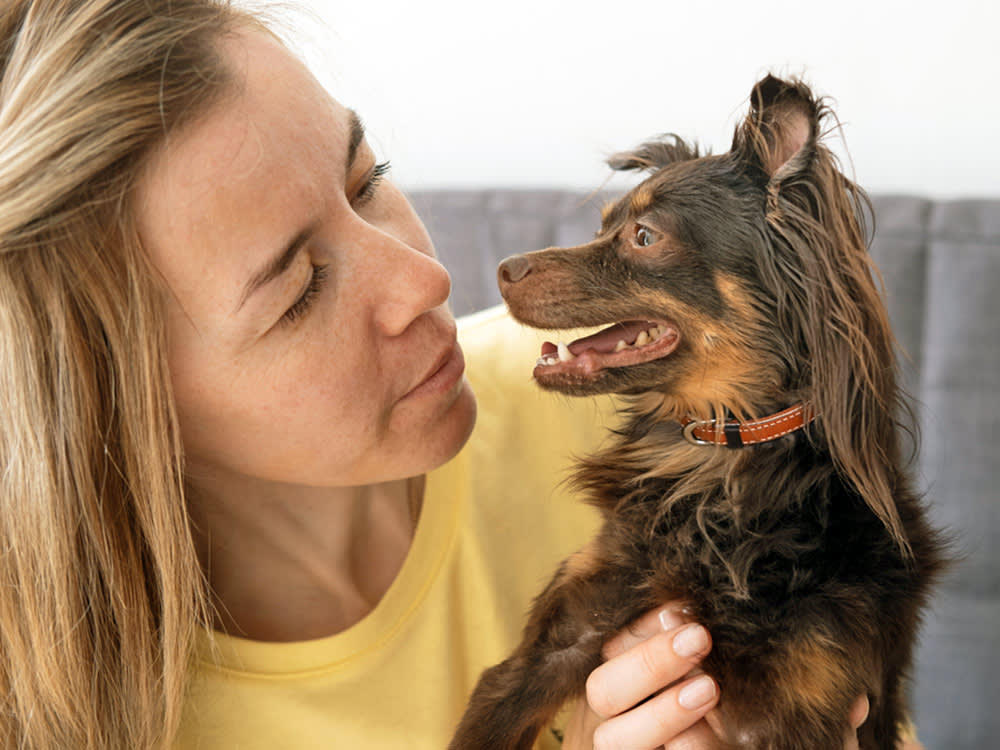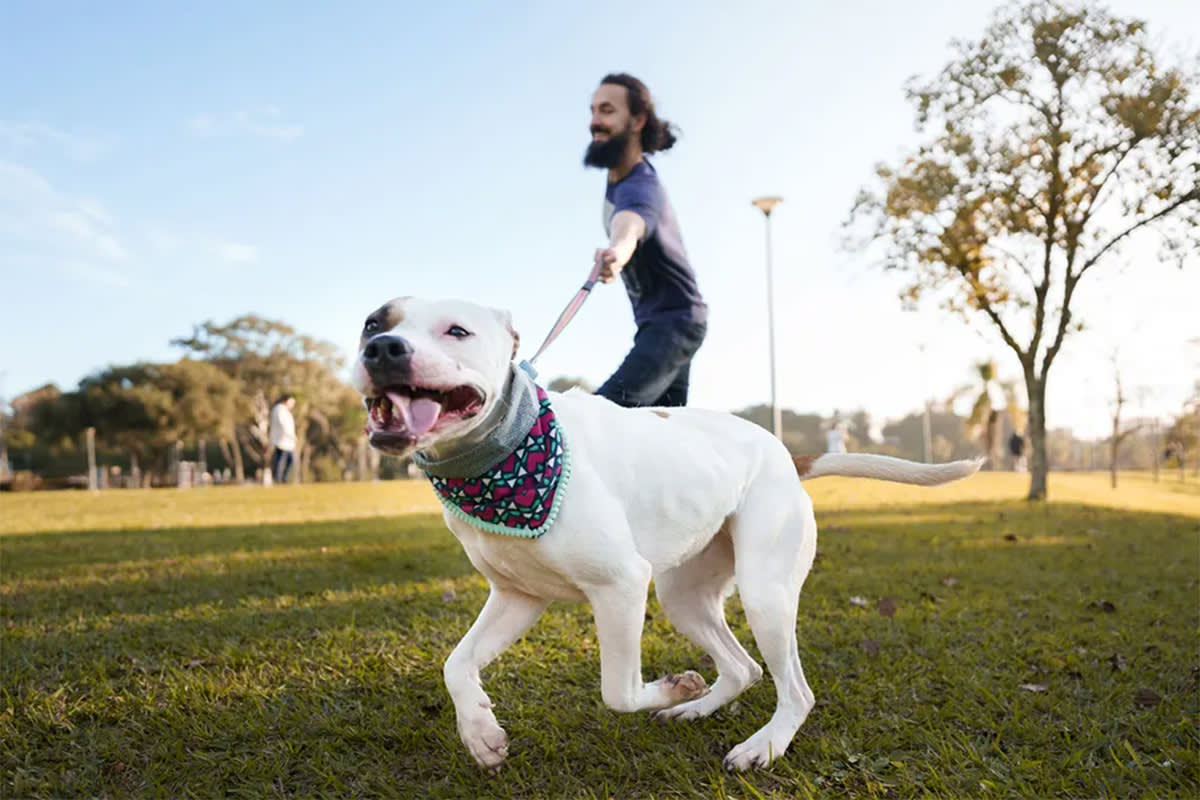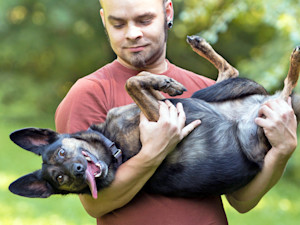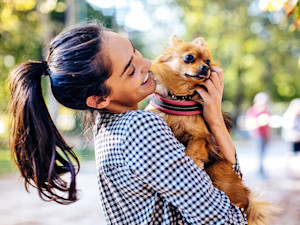The 4 Most Misunderstood Dog Behaviors
And how to figure out what your pup is really trying to say.

Share Article
Dogs communicate constantly — but because they can’t speak our language, we can easily misread their signals. Misunderstanding your dog’s behavior can lead to frustration, missed cues, and even safety concerns.
We spoke with Tanya Lim, founder and head trainer at Family Pupzopens in new tab in Denver, to decode four commonly misunderstood dog behaviors and what they’re truly trying to tell us.
How dogs express themselves
Dogs primarily communicate through body language. Their ears, mouth, tail, posture, and especially their eyes all carry meaning. Even small gestures — like yawning, lip licking, or freezing while on a walk — can indicate stress, uncertainty, or discomfort.
But how can you know if a yawn is a sign of stress or just a yawn? Lim says context is key. Observing what happens before, during, and after a behavior helps pet parents accurately interpret their dog’s actions.
How much do you spend on your pet per year?

“Think of it as reading a sentence, not just a word,” she says. “Combine posture, facial expressions, tail position, and the environment to interpret intent.”
For example, say you’re at the park, and your dog notices another dog in the distance. Your dog may exhibit subtle signals of discomfort, like licking their lips, looking away, or busying themselves by sniffing the ground. “If we fail to read the situation, then the dog may feel like they need to escalate because what they’re communicating is not being heard,” Lim says.
Escalating signals might look like your dog freezing or staring. If nothing is done to alleviate a dog’s discomfort, they might then resort to barking, lunging on the leash, or snapping. Noticing your dog’s subtle and non-subtle cues can prevent misunderstandings, reduce tension, and even improve our relationship with them.
Commonly misunderstood dog behaviors
Here are four dog behaviors that are frequently misunderstood or misinterpreted.
Growling
Many people immediately see growling as aggression. In reality, many studies show that dogs use growling to communicate all sorts of things — as a warningopens in new tab, in a playful way, to communicate their sizeopens in new tab.
When our dog growls at home, Lim says it’s often a sign of discomfort and that they need more space. In fact, Lim says it’s positive when your dog communicates this discomfort because you can act on it and prevent escalation.
Should you punish your dog for expressing discomfort through growling, they may feel like they have to skip to the next step of escalation next time, which may be snipping or biting. Punishment should never be how you approach your pup’s behavior.
Jumping
Excited jumps are another behavior frequently misread as bad manners. Lim says that most dogs jump because they’re thrilled to see us and simply don’t know a calmer way to say hello. Their enthusiasm just needs guidance, not punishment.
Recent research backs this up. One studyopens in new tab found that dogs are far more likely to jump on familiar people — especially when greeting their owners at home or during walks — than on strangers. The dogs’ body language in these moments, like wagging tails, lowered posture, and ears pulled back, reflected friendliness and excitement rather than aggression or rudeness.
Redirecting that joyful energy with cues like “sit” or “paw” gives dogs a way to express their excitement without the chaos. This approach also helps turn an overzealous greeting into a moment of connection and calm.
Pulling on the leash
Leash pulling can be mistaken for stubbornness or disobedience. However, Lim suggests this is simply dogs responding to their environment. The world is full of exciting smells, and walking in a straight line isn’t natural for them.
“Pulling is their way of exploring,” she says.
Recent researchopens in new tab highlights that leash pulling can reduce the quality of walks and affect a dog’s wellbeing, if not addressed properly. The study emphasizes that positive reinforcement-based training is the most effective and humane way to curb pulling.
By viewing leash pulling as natural curiosity and using humane training methods, pet parents can help their dogs explore safely while keeping walks enjoyable for both humans and pets.
Tail wagging
While many people equate a wagging tail with happiness, Lim says it can be more nuanced. For instance, several studies opens in new tab showopens in new tab that tail movement can vary, reflecting different emotional states. Tail wags to the right are said to be positive, while tail wags to the left are negative.
“People may think the dog is friendly, but sometimes a wagging tail is a way of saying, ‘Please, stay away,’” Lim says. “The context matters: Is the tail loose and relaxed or high and stiff?” Considering tail position alongside body language helps people understand their dog’s mood accurately.
Learn your dog’s language
Every dog behavior is communication, even the quirky or challenging ones. By observing context, tuning into body language, and understanding growls, jumps, leash pulls, and tail wags, pet parents can respond thoughtfully — turning everyday interactions into opportunities for connection and learning.
“When we approach things with curiosity instead of frustration, we can start to see what our dogs are trying to tell us,” Lim says. “The more we listen, the stronger our bond becomes.”

Sarah (Kollmorgen) Cottone
Sarah is a writer whose work has appeared in The Atlantic, Discover magazine, and HuffPost among other places. She lives outside of Denver with her husband and their dog, Lucy, who is the true queen of the household.
Related articles
![Black dog barking outside.]()
Do Dogs Throw Temper Tantrums?
They’re definitely not happy when they don’t get their way.
![Man holding his dog like a baby outside.]()
Are Dogs Really Just Permanent Toddlers?
We’ve all heard the comparison.
![Woman petting her brown poodle dog outside in a hammock.]()
4 Reasons Dogs Like Being Pet
It’s good for them, and it’s good for you. Here’s why everyone wins.
![Woman picking up her dog outside.]()
Do Dogs Actually Like Being Picked Up?
You want to hold them in your arms, but here’s how they really feel about being scooped up.
![Dog laying on the floor at home surrounded by toys.]()
Is Your Dog a Toy Addict? A New Study Says It’s Totally Possible
How to know when it’s time to be concerned about your dog’s obsession with Lamb Chop.








